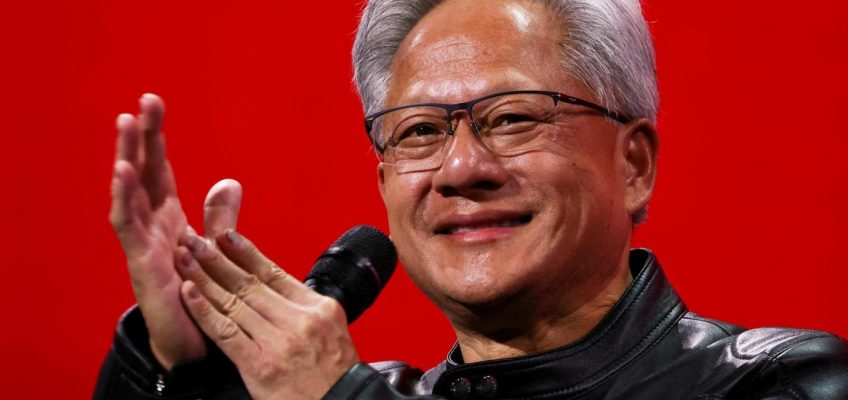Editor’s Note: This article originally appeared in The Texas Tribune. The Texas Tribune is a member-supported, nonpartisan newsroom informing and engaging Texans on state politics and policy. Learn more at texastribune.org.
Camp Mystic, the private summer camp that now symbolizes the deadly Central Texas floods, sat on a tract of land known to be at high risk for a devastating flood.
Nearly 1.3 million Texas homes are similarly situated in parts of the state susceptible to dangerous floodwaters, according to a state estimate. A quarter of the state’s land carries some degree of severe flood risk, leaving an estimated 5 million Texans in possible jeopardy.
Yet, local governments—especially counties—have limited policy tools to regulate building in areas most prone to flooding. The state’s explosive growth, a yearning for inexpensive land, and a state far behind in planning for extreme weather compound the problem, experts said.
While cities can largely decide what is built within their limits, counties have no jurisdiction to implement comprehensive building codes or zoning that could limit people from living close to the water’s edge.
Camp Mystic and many of the other camps along the Guadalupe River in Kerr County, where the disaster’s wreckage has been concentrated, were far outside city limits and any regulatory authority of the Kerrville City Council.
Some guardrails exist when it comes to building on flood plains. For property owners in flood-prone areas to tap federal flood insurance, localities have to enact minimum building standards set by the federal government. And counties can use a limited supply of federal dollars to relocate residents out of flood zones. However, those programs have had mixed success. Other programs to fortify infrastructure are tied to federally required hazard mitigation plans, which most rural counties in Texas do not have on file.
Keeping people out of the state’s major flood zones altogether is unrealistic if not impossible, experts in flood plain management and infrastructure said.
For one, it’s human nature to want to be near water—whether it’s to live or vacation there.
“Everybody is drawn to water,” said Christopher Steubing, who heads the Texas Floodplain Management Association. “It becomes challenging when you’re telling people what they can and cannot do with their property. It’s a delicate balance, especially in Texas.”
Families have flocked to Texas from more expensive parts of the country in search of a lower cost of living, moving to places more vulnerable to severe weather events like flooding and wildfires intensified by climate change, research shows.
The state’s population has mushroomed over the last decade, spurring a building frenzy in cities and unincorporated areas alike. The state’s total population has grown by more than 7 percent since 2020. Meanwhile, the Hill Country, which includes Kerr County, has grown by about 9 percent.
Kerr County has seen relatively little population growth in the last few years, said Lloyd Potter, the state’s demographer. But other parts of the Hill Country, including neighboring Gillespie County, have seen relatively steady population growth.
“It is a desirable area for retirees,” Potter said. “It’s beautiful, and it’s reasonably close to urbanized areas, so I think that (growth is) likely to continue.”
Some people don’t have a choice but to live in flood-prone areas, where land is typically cheaper. Often, cities and towns only allow cheaper housing like mobile and manufactured homes to go in places that carry a higher risk of flooding, said Andrew Rumbach, a senior fellow at the Urban Institute who studies climate risk. When a weather disaster destroys a mobile home park, often it gets rebuilt right where it was, Rumback said.
“The only place you can build it is right back in the flood plain,” Rumbach said.
Determining what can be built on flood plains is largely left to local officials, who may feel uneasy about limiting what property owners do with their land—especially in a state like Texas, known for prioritizing personal liberty—for fear that doing so will harm the local economy or lead to retribution against them at the ballot box, experts said. Often, the aim is not to stop people from building there altogether, but to create standards that make doing so less risky. Even when places adopt new rules, development that predates those rules is often grandfathered in.
How strictly local officials regulate development in flood plains comes down to political will, said Robert Paterson, an associate professor at the University of Texas at Austin’s School of Architecture.
“Fundamentally, disasters are a human choice,” said Paterson, who specializes in land use and environmental planning. “We can choose to develop in relation to high risk, or we can choose not to. We can stay out of harm’s way.”
Texas adopted its first statewide flood plan last year. As more people move outside of the state’s major urban areas, cities, towns and counties have increasingly adopted flood plain management rules for the first time or enacted stricter ones, Steubing said.
“You have counties that are catching up and adopting standards, but the growth can happen a lot faster than we can get ordinances adopted,” Steubing said.
Even so, localities aren’t tackling development in flood zones quickly enough to keep up with the pace of massive weather disasters, Rumbach said, and states can’t afford to wait for every city and county to adopt stricter standards. State lawmakers, currently weighing what measures to take in the flooding’s aftermath, should consider ways to give cities and counties better tools to manage flood plain development, he said.
“States are the right level of government to do this because they’re close enough to their communities to understand what is needed in different parts of the state and to have regulations that make sense,” Rumbach said. “But they’re far enough away from local governments that we can’t have this race to the bottom where some places are just the Wild West, and they’re able to build whatever they want while others are trying to be responsible stewards of safety and lower property damage.”
There is evidence that some Texas cities are taking flood plain management seriously. Most parts of Texas saw relatively little development on flood plains during the first two decades of this century, according to a study published last year by climate researchers at the University of Miami and other institutions. But parts of the Hill Country like Kerr, Bandera, Burnet and Llano counties saw more flood plain development than other parts of the state, researchers found.
As the Hill Country population grows, people are increasingly finding themselves in harm’s way, said Avantika Gori, an assistant professor of civil and environmental at Rice University and flood expert. Local and state officials can make different decisions on how to develop around flood plains, she said.
“We can’t prevent extreme rainfall from happening, but we can choose where to develop, where to live, where to put ourselves,” Gori said.
The Hill Country, particularly the areas farther from the Interstate 35 corridor, is less developed. There could be a temptation to build more as part of the recovery.
Following the 2015 Wimberley flood, developers pressured regulators to allow for more building in the flood plain as the area’s population continued to grow, said Robert Mace, executive director and chief water policy officer of the Meadows Center for Water and the Environment at Texas State University.
“My advice is, a river is beautiful, but as we’ve all seen, it can be a raging, horrific beast, and it needs to be treated with respect,” Mace said. “Part of that respect comes from making careful decisions about where we build.”
A confluence of factors lead to structures being built on the flood plain, said Jim Blackburn, a professor of environmental law in the Civil and Environmental Engineering Department at Rice University.
Lax regulations with loopholes that allow existing structures to remain on flood plains, out-of-date flood maps that do not show the true risks posed to residents and economic incentives for developers to build on seemingly attractive land near the water all encourage the development to continue, Blackburn said.
“I get it,” Blackburn said. “People want to be by the river. It’s private property, and we don’t like to tell people what to do with their private property, but there comes a point where we have to say we’ve had enough.”
The federal regulation of development on flood plains is largely done through the National Flood Insurance Program, which subsidizes flood insurance in exchange for implementing flood plain management standards. Under federal law, buildings on a flood plain must be elevated above the anticipated water level during a 100-year storm, or a storm with a 1 percent chance of occurring in any given year. Local governments must implement the program and map flood plains. Local officials may impose additional building restrictions for building in these areas, such as the requirement in Houston that all new structures be elevated two feet above the 500-year flood elevation.
Kerrville last updated its rules overseeing flood plain development in 2011, according to the city’s website. A city spokesperson did not immediately return a request for comment.
Texas historically has been unfriendly to federal environmental regulation, which is viewed as excessive red tape that gets in the way of economic progress, Blackburn said.
That has led to the state being decades behind the curve in reacting to more frequent and intense rainstorms fueled by a warming climate. As temperatures on average go up, more water on the Earth’s surface is evaporated into the atmosphere, and the warmer atmosphere can hold more moisture. That extra moisture in the atmosphere creates more intense and frequent storms, according to the U.S. Geological Survey.
Additional development can also leave flood maps even further out of date as more impermeable surfaces replace natural flood-fighting vegetation, Sharif said.
A 2018 study authored by Hatim Sharif, a civil and environmental engineering professor at the University of Texas at San Antonio and other UTSA researchers found that the 2015 Wimberley flood was worsened by new construction removing natural barriers to flooding, although natural causes were the primary drivers of the flood.
Experts said that the flooding in the less-developed Kerr County was likely not worsened in a significant way by development. Sharif did encourage the state to fund a study similar to the one he conducted on the Wimberley flood to allow regulators and residents to better understand how exactly Friday’s flood occurred.
Sharif also argued in favor of further investments in “impact-based forecasting.” That area of study combines regular forecasting with on-the-ground information about what the impact of that forecast will be and who is in harm’s way to provide clearer warnings to residents, or, in Sharif’s words, “What do 7 inches of rain mean for me as a person staying in a camp near the river?”
Many of the flood plain maps throughout the state are out of date, given the reality of more frequent and intense storms and continuing development, Blackburn said, and local officials face political pressures not to restrict new development with tougher building codes.
In 2011, the city of Clear Lake installed, then removed signs warning that a hurricane storm surge could reach as high as 20 feet in the city after concerns were raised that the signs were impacting property values.
“I think that tells us a lot,” Blackburn said. “We’re more worried about home sales than the safety of the people buying the homes.”
The post ‘Disasters Are a Human Choice’: Texas Counties Have Little Power to Stop Building in Flood-Prone Areas appeared first on The Texas Observer.



